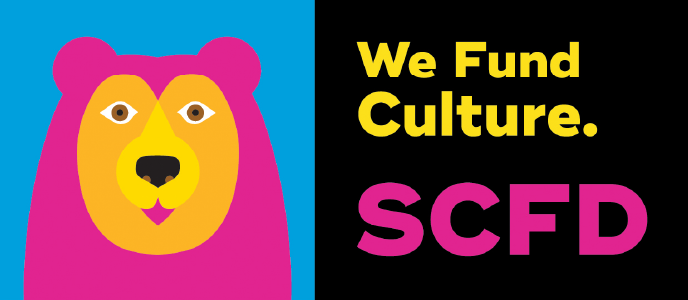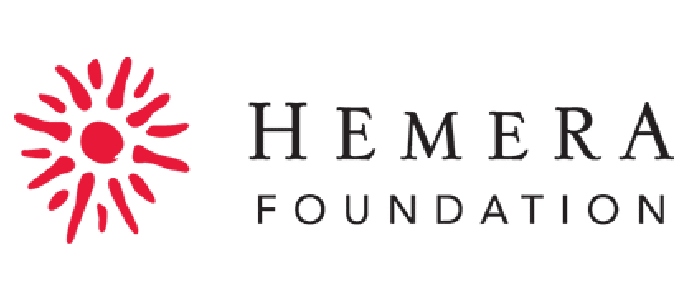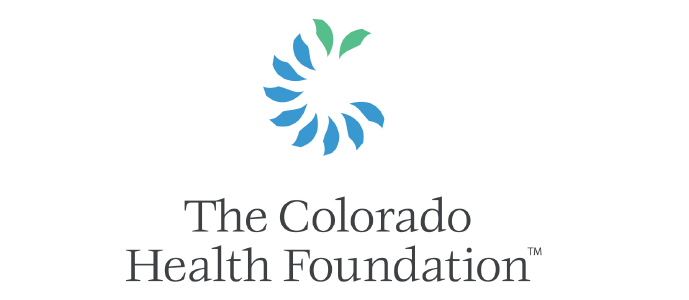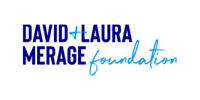RedLine is a proud partner and administrator of the yearly Arts in Society artist grant. Funded through a cohort of Colorado foundations, this collaborative program provides grants to both individuals and organizations that use art as a vehicle to promote social justice and community welfare.
In 2022, we’ll be highlighting our Art in Society (AIS) grant recipients and the incredible projects, programs, and events supported by their grant. We’re delighted to kick off this series with Helanius J. Wilkins: Award-winning Choreographer, Performance Artist, and Innovator.
About Helanius J. Wilkins
From Wilkins’ artist bio:
“Wilkins's creative projects are rooted in the interconnections of American contemporary performance, cultural history, and identities of Black men. His work examines the raced dancing body and the ways that ritual can access forms of knowledge.
Intrigued by ideas about indeterminacy in creative process and performance, he approaches performance and pedagogy as means of re-framing perspectives, creative practices, and technical training. In his intermedia collaborations, he works with artists from a wide range of disciplines, including film, video, and design.”
Learn all about Helanius’s 2022 projects and events below!
Tell us about your first project that will utilize your AiS grant: The Conversation Series: Stitching the Geopolitical Quilt to Re-Body Belonging.
I have two hands, one body, and two feet — one foot to place in front of the other — to make the change I want to see. I have two hands, one body, and two feet — one foot to place in front of the other — to reach out to diverse, inclusive communities to invite them to join me in collectively making that change.
The Conversation Series: Stitching the Geopolitical Quilt to Re-Body Belonging will feature new choreographies, a documentary film, and a digital archive of the process and performance.
The work will bring together artists, humanitarians, social justice activists, DEI&SJ (Diversity, Equity, Inclusion, & Social Justice) consultants, and — most central — members of diverse, intergenerational communities across the nation.
The work centers on an interracial, male duet (dancer Avery Ryder Turner and myself) that preferences the value of bodies coexisting — sharing weight and responsibility, dancing to become better ancestors.
As we travel to make and share this work, we will stitch together a dance-quilt to broaden our understandings of what it means to be American and sew ourselves together anew.
Afraid due to the onset of COVID-19 and the repeated videos of police brutality incidents, two summers ago I began to walk solo — up to 16 miles a day — in protest and with purpose. From this, a dance project concept emerged that imagines choreography as quilt-making to unlearn fear and interrupt the disturbing tragic turns of inhumanity.
“Making this work, I am less afraid to walk.”
My career spans 27 years of creating choreographies that bridge dance and social justice. The arc of my career reveals me dreaming boldly and actively doing-through-making and performing choreography.
In the action-ing of The Conversation Series: Stitching the Geopolitical Quilt to Re-Body Belonging, I feel like I am bringing all the parts of me (knowledge, experience, curiosities, friendships, networks) together to anchor my dreams/ambition/vision to utilize my craft and my body to illuminate a path that resists passivity, indifference, and hostility, centering healing and unity.
“Much in the way that it has become my life, Dance has given me life. ”
Through creating The Conversation Series: Stitching the Geopolitical Quilt to Re-Body Belonging in and WITH community, I hope that it will spark a sense of liberation from the intense pressures of our world in this moment and a sense of belonging, dancing to create a more socially just landscape of potentiality.
I am tremendously grateful for being awarded Arts in Society funding to support the creation of The Conversation Series: Stitching the Geopolitical Quilt to Re-Body Belonging. I am humbled by and beyond excited to have necessary resources to do this work with deep care and with an eye towards positive long-term impact. Through collaborations with organizational-partners in 3 Colorado regions (rural, mountain/resort and urban) stories/histories will be illuminated through community-engagements and documented, bringing to the center marginalized voices in an 84% white population state.
Through choreography and community-engagements emphasizing care/repair, community-members will engage to regain a sense of belonging and to course correct American history thus redefine it as an aggregation of cultures, where all heritages are the essence of this country’s vibrancy.
Remarkably close to my heart, through this work I want to make a difference — especially for the generations to follow.
What's next in the pipeline for you in 2022? What other projects are you dreaming up this year, and how will your AiS grant help to support these projects?
The primary focus of 2022 will be diving deep into the making of The Conversation Series: Stitching the Geopolitical Quilt to Re-Body Belonging. My most ambitious undertaking to date, it is a journey that will span 7 -10 years…and I am just beginning.
Creative development residencies and tours consisting of community-engagements and performances will take place in the states of Colorado, Michigan, Ohio, Louisiana, Iowa, and New Mexico. My AIS grant will support the Colorado components of the work that will involve engaging communities in the Denver-metro area, Carbondale, and Pueblo.
As a result of crossing paths with Ryder, I feel that I have gained an artistic partner who, through the ways we are finding meaningful approaches to collaborate, dancing together, and embracing parallel visions of a better world, is inspiring a body of work that is expansive. We are anchored by The Conversation Series: Stitching the Geopolitical Quilt to Re-Body Belonging, and its process has yielded/is yielding smaller duet works.
We are currently working on one such work that was to be performed as part of Movement Research at the Judson Church in NYC on January 10th. (Unfortunately, the performance was postponed due to the Omicron variant surge in NYC. I suspect the rescheduled date will fall within the 2022 year.)
We will also be performing as part of the CU Boulder Dance Program’s The Current, an annual faculty and guest artist performance series. Taking place April 7-10, 2022, at the Charlotte Irey York Theatre on CU Boulder’s campus, we will perform two of our smaller duets, Anticipation (2021) and a newer work that is currently untitled.
I feel it important to note that I have been using the term “work” to refer to The Conversation Series: Stitching the Geopolitical to Re-Body Belonging. That is intentional.
I had an epiphany while doing an Artist Talk in Carbondale, CO, which shifted my orientation to the notion of it being a project. Social justice is not a project.
“The work of social justice is not a project. It is an ongoing effort, a practice, a life-long commitment. ”
The term “project” often implies a beginning and an ending. While I am not sure if “work” is necessarily the correct word either, divorcing myself from the use of the word “project” allows me to feel grounded in the greater truth of what I am striving to do through The Conversation Series: Stitching the Geopolitical Quilt to Re-Body Belonging.
What was your experience like when applying for an Arts in Society grant? What tips would you share with artists and organizations looking to apply for an AiS grant?
Like with all grants, I found the Arts in Society application to be a beautiful challenge. I learn so much about what I am dreaming/striving to do by writing grants.
The AIS grant created a portal for deep self-reflection, examining the work I am doing, and accessing stronger, clearer ways to articulate what I am doing. The overall process was supportive and uncomplicated.
One thing that influenced my experience is that I was afforded an opportunity to be a panelist for a previous granting cycle. Serving on the panel was an invaluable experience to better understand Arts in Society’s mission and to learn through reviewing and discussing proposals. Having a support system of a handful of individuals to review my writings and ask me tough questions was equally valuable to my understanding of how to achieve greater clarity of my vision.
As far as tips, I encourage any artists looking to apply for an AIS grant to start early, to reflect on their relationships to the communities central to their projects, and to never be afraid to reach out to ask questions to the support staff.
How to Follow or Contact Helanius:
Email: info@helaniusj.com
Artist Website: https://www.helaniusj.com/
Facebook: https://www.facebook.com/Helanius-J-Wilkins
Twitter: https://twitter.com/HelaniusJ
Instagram: https://www.instagram.com/helaniusjwilkins/
Follow the Arts in Society Instagram!
From important grant deadlines to grantee and partner highlights, follow the Arts in Society Instagram to stay in-the-know with the grant program!
Follow Arts in Society on Instagram >
Photography Credits
1. Pictured: Helanius J. Wilkins. Photography courtesy of Christopher Michael Carruth. All rights reserved. Used with permission. ©2019.
2. Pictured: A. Ryder Turner & Helanius J. Wilkins. Photography courtesy of Carlos D. Flores. All rights reserved. Used with permission. ©2020.
3. Pictured: Helanius J. Wilkins. Photography courtesy of Carlos D. Flores. All rights reserved. Used with permission. ©2020.
4. Pictured: Helanius J. Wilkins. Photography courtesy of Carlos D. Flores. All rights reserved. Used with permission. ©2020.








